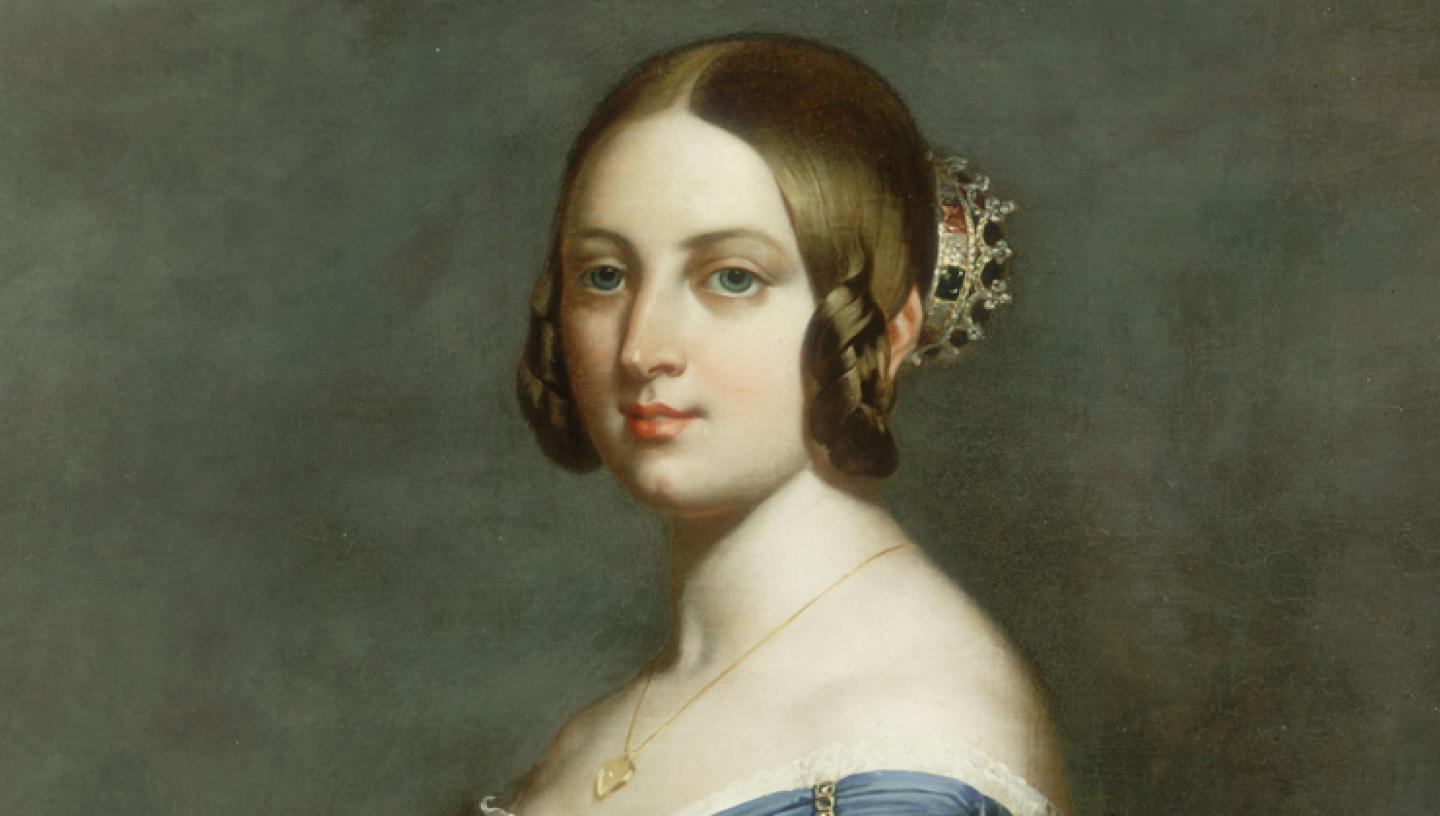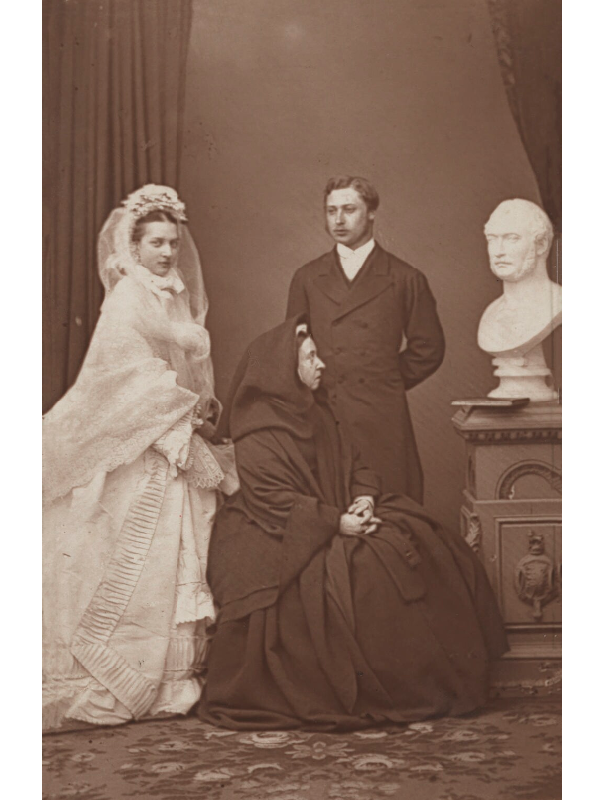
Queen Victoria and Prince Albert
It's been over 100 years since Queen Victoria and Prince Albert were married, yet their relationship remains one of the most well known in British royal history. What made their wedding such a momentous occasion? Learn more about this historic day and more.
Victoria and Albert's engagement
The couple first met at Victoria's 17th birthday in April 1836 when she was heir to the British throne. The cousins were introduced by their uncle, Leopold I (1790 - 1865), King of the Belgians. In their memoirs, both Albert and Victoria record that they almost instantly fell in love.
After Victoria acceded to the throne in 1837, tradition dictated that no one could propose to a reigning monarch. Therefore, Victoria proposed to Albert - she proposed during his second visit in October 1839 at Windsor Castle in Berkshire.
Victoria and Albert's wedding
On 10 February 1840, Queen Victoria married Albert of Saxe-Coburg and Gotha (he later took the title of Prince Consort). They were married at the Chapel Royal, St. James Palace in London. This was the first marriage of a reigning English Queen since Queen Mary in 1554.
Victoria arrived at the chapel as part of a long carriage procession from Buckingham Palace. Albert was escorted by a squadron of his senior cavalry, while 12 bridesmaids carried Victoria's train. As Victoria's father had died when she was a child, she was given away by her favourite uncle, Prince Augustus Frederick, the Duke of Sussex.
After the ceremony, the married couple and the carriage procession travelled to the Queen's residence at Windsor Castle.
Queen Victoria's wedding dress
For her wedding, Victoria chose to wear a white satin and lace dress, which was seen as unusual at the time. It was more common for brides to wear gowns of rich colours which could be used again for other occasions. The white dress was chosen as a symbol of wealth, purity, and ensured the Queen would stand out from the crowd in the procession.
The silk dress used material woven in Spitalfields in London, while the lace was made in Honiton, Devon, supporting the then-flagging English craft. The dress was designed by William Dyce, the head of the Government School of Design, now known as the Royal College of Art.
While Victoria did not start the tradition of the 'white wedding', she did help to popularise the white wedding dress. During the wedding of the Duke and Duchess of Cambridge, many comparisons were made between Victoria and Catherine Middleton's dresses.
How long were Victoria and Albert married?
Victoria and Albert were married for 21 years, remaining together until his death on 14 December 1861. The Queen was distraught at his passing; her diaries describe how reliant the couple were on each other practically, politically and emotionally. After his death, the Queen wore black in mourning for the rest of her life, earning the nickname the 'widow of Windsor'.
How many children did Victoria and Albert have?
Queen Victoria and Prince Albert had nine children (four boys and five girls); they were:
- Victoria Adelaide Mary Louise (1840 -1901)
- Edward Albert, Later King Edward VII (1841 - 1910)
- Alice Maud Mary: (1843 - 1878)
- Alfred Ernest Albert (1844 - 1900)
- Helena Augusta Victoria (1846 - 1923)
- Louise Caroline Alberta (1848 - 1939)
- Arthur William Patrick Albert (1850 - 1942)
- Leopold George Duncan Albert (1853 - 1884)
- Beatrice Mary Victoria Feodore (1856 - 1944)
Where are Queen Victoria and Prince Albert buried?
Queen Victoria died at the age of 81 on 22 January 1901. She was buried beside Prince Albert in the Royal Mausoleum the Queen had built for her husband at Frogmore House, just half a mile from Windsor Castle.
Facts about Queen Victoria and Albert
Albert's public popularity
Initially, Albert was not popular with the British public. Saxe-Coburg-Saalfeld, where he was from, was seen to be a small and unknown place, barely larger than a small English county. As Victoria spent many early years of their marriage pregnant, Albert stood in for his wife and advised her on matters of importance and became well-loved by the British public. His organisation of the Great Exhibition was seen as a crowning achievement.
Victoria was multilingual
As well as being fluent in both English and German, Victoria also spoke French, Italian and Latin. She and Albert regularly wrote to each other in German.
Victoria or Alexandrina?
Victoria was actually the Queen's second name; her birth name was Alexandrina. As her child, her nickname was 'Drina'.
'The Grandmother of Europe'
Victoria had nine children and 42 grandchildren. As a way of growing Britain's influence overseas, several of her children were married into European monarchies, including Russia, Germany, Norway and Spain. This gave her the nickname, 'the grandmother of Europe'.
Victoria's love for Albert
Queen Victoria wrote in her diary that she was attracted to Albert from the moment she met him in 1836:
"He is extremely handsome; his hair is about the same colour as mine; his eyes are large & blue & he has a beautiful nose & a very sweet mouth with fine teeth."
Albert was Queen Victoria's first cousin
Albert and Victoria were first cousins, sharing a set of grandparents. Victoria's mother, Victoria of Saxe-Coburg-Saalfeld and Prince Albert's father, Duke Ernst of Saxe-Coburg and Gotha were brother and sister. The couple shared several other common threads: they were born in the same year, just three months apart, and the same midwife, Madame Siebold, delivered both children.
Victoria moved the royals to Buckingham Palace
Before Victoria became Queen, British royals had lived at many different locations, including Windsor Castle and Kensington Palace. Three weeks after inheriting the crown, Victoria moved into Buckingham Palace, turning it from a private home into a working royal residence. She was the first monarch to rule from the palace, and it still serves as the heart of the British royal family today.
Victoria and disease
Victoria was the carrier of an inherited disease called haemophilia. This rare blood condition prevents blood from clotting, causing the sufferer to bleed severely from a slight injury. The disease proved fatal to Victoria's son Leopold, who died after a fall, and haemophilia was present in many other royal families of Europe.
The death of Prince Albert
Albert died on the 14 December 1861 at the age of 42. While his official death certificate records the cause as typhoid fever, historians now suggest that his death was related to stomach complaints earlier in the year, which might have been abdominal cancer or Crohn's disease.
Following his death, Victoria went into mourning and famously wore black for the rest of her life. Albert's rooms in each of their houses were kept as they had been, even including having hot water brought in the morning and linen and towels changed daily.
On 20 December 1861, in a letter to her uncle Leopold of Belgium (who first introduced the couple), she wrote:
… to be cut off in the prime of life - to see our pure happy, quiet domestic life, which alone enabled me to bear my much disliked position, cut off at forty-two - when I had hoped with such instinctive certainty that God never would part us, and would let us grow old together ... - is too awful, too cruel!






